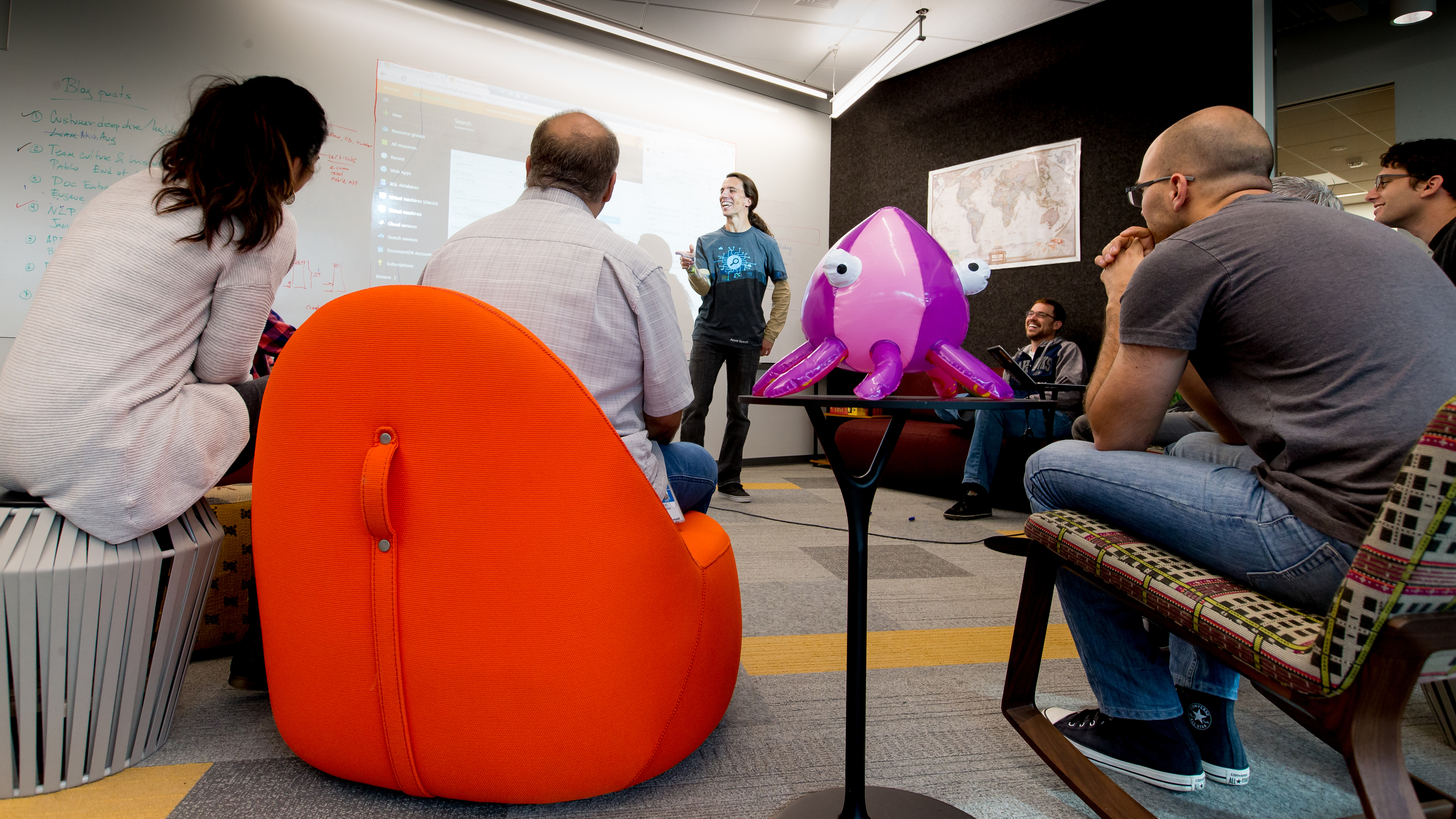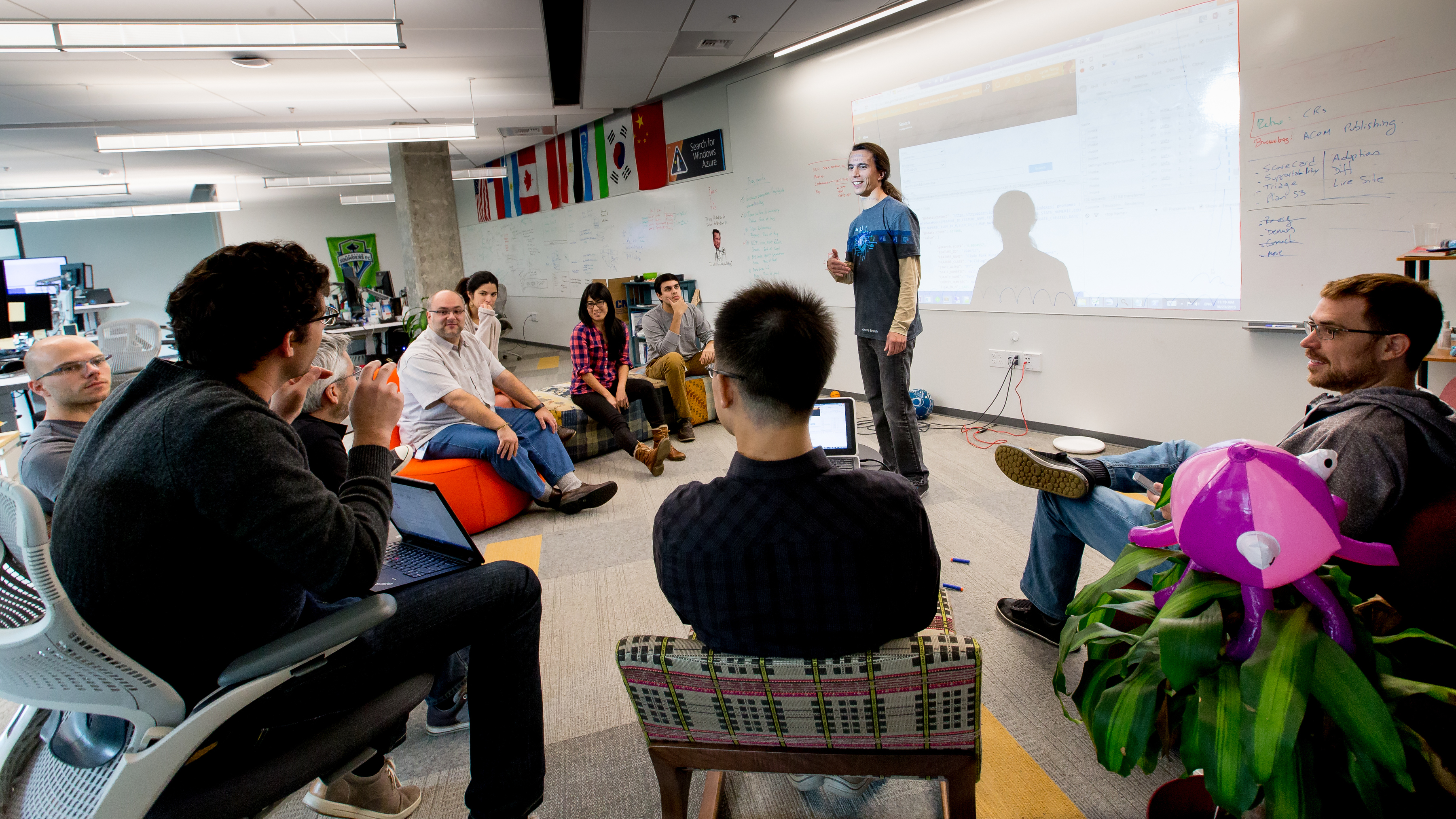
A startup within Microsoft searches for (and finds) what customers want
The rules were simple: Put down the PC, pick up the phone and call customers.
Not exactly Fight Club, but the opening dictum of the TechStars startup accelerator program was striking nonetheless for the three longtime Microsoft engineers. Pablo Castro, Liam Cavanagh and Eugene Shvets had signed up for the TechStars program—a 13-week sprint to launch young companies into the stratosphere—as an experiment. The question they wanted to answer: Could a team at Microsoft act like a lean startup?
On day one, surrounded by hungry entrepreneurs, they weren’t so sure. Coders code. What was all this talk of telephones?
It turned out to be the first lesson in a crash course on customer obsession — a lesson they’ve taken to heart as they run Azure Search, a new search-as-a-service offering, as a small startup inside Microsoft.
“The single biggest takeaway was that a startup is a machine that searches for customer value above everything else,” said Castro, partner director software engineering on Azure Search. “And there’s only one way to search for what customers want: Talk to them.”

Two years after graduating from TechStars, Castro and company still live and breathe that mantra. Although they’re well-funded as part of Microsoft’s Cloud and Enterprise division, the Azure Search team still acts like a startup within the big business. They operate in a lean manner, view scarcity as a virtue, and stand ready to pivot in different directions as they obsessively focus on learning from current and potential customers.
And yes, they still pick up the phone. It’s gotten much easier since that first month they spent at TechStars, when all they did was call potential customers.
“We were pretty terrible at it,” Castro said.
They admitted as much at the end of the first week, when everyone went around and shared how many customers they’d reached. Team Microsoft put up a goose egg.
But they soon got the hang of it. Cavanagh recalls picking up the phone and connecting with a potential customer. The guy thought it was a prank. “He just didn’t believe there was a Microsoft engineer cold calling customers,” Cavanagh said. Turned out he was the company’s CEO. The two ended up chatting for an hour, and the company is now one of the biggest customers for Azure Search.
When the accelerator program ended, the trio returned to their offices and now dusty desks in Redmond, Washington. It was a bit of a through-the-looking-glass experience. “We had been brainwashed,” Castro joked. “We now had a totally different perspective on how to build products.”
Most product pitches to executive staff at Microsoft are heavy on the technical details. The TechStars grads barely included any. Instead, they described what they had learned from customers. “At some point toward the end, I think we said we assumed we could actually build it,” Cavanagh said.
Leadership agreed, and they went off to code. And make more calls, of course.
Their initial plan was to build a product that would work for any scenario that could possibly be related to search-as-a-service. But customer evidence pointed in a different direction, where a generic platform didn’t address anybody’s needs. They ultimately pivoted to focus on three areas (catalogs and ecommerce, user-generated content and social networks, and line-of-business apps) and let go of all the other use-cases.
They launched a private preview and quickly signed up 100 customers. Realizing there was revenue potential and customer demand for this search service, they then launched publically.
“Scarcity forced us to make good choices,” Castro said. In the context of a startup business, scarcity gives you no choice but to focus on what really matters. Not having time or people to spare can actually be beneficial. In most startups this is not a choice. This is an easy one for big, resourceful companies to get wrong.
But the success of Azure Search shows that it can work at Microsoft. Since becoming generally available in March, Azure Search now has many thousands of customers in 12 regions around the world. And while the team has grown quite a bit from its core triumvirate, they’re still a lean-and-mean operation obsessing over their customers’ needs.

“It’s hard to think like a customer,” said Evan Boyle, a software engineer. “But you have to, otherwise you go build a great feature and then find out nobody wants it. You have to care more about the customer than geeking out on the tech.”
That’s why few fights pop up over which features to focus on. Everyone knows what will solve a customer pain point. “We could go off on our own and build a billion things,” Cavanagh said. “Instead, we pick the right battles. We almost don’t do anything without first talking to customers.”
Ultimately, startups are about customer obsession, Castro said. The Azure Search team has come a long way, but the startup tone remains. “Customer obsession permeates everything we do, all the way down to process and technical choices such as how we do DevOps so everyone understands our customers’ workloads, and why we do continuous delivery so we can get enhancements to customers every few days,” he said. “If you create a startup inside a big company to build a product that has already been defined, or in some other way try to inject a bunch of agenda to it, you’re doing it wrong. But if you give it full autonomy, the result can be a great product idea that customers will love, just probably not the one you thought you were going to get.”
For more info on what the Azure Search team has learned as a startup within Microsoft, read Pablo Castro’s post on Medium.
Photos by Scott Eklund/Red Box Pictures














